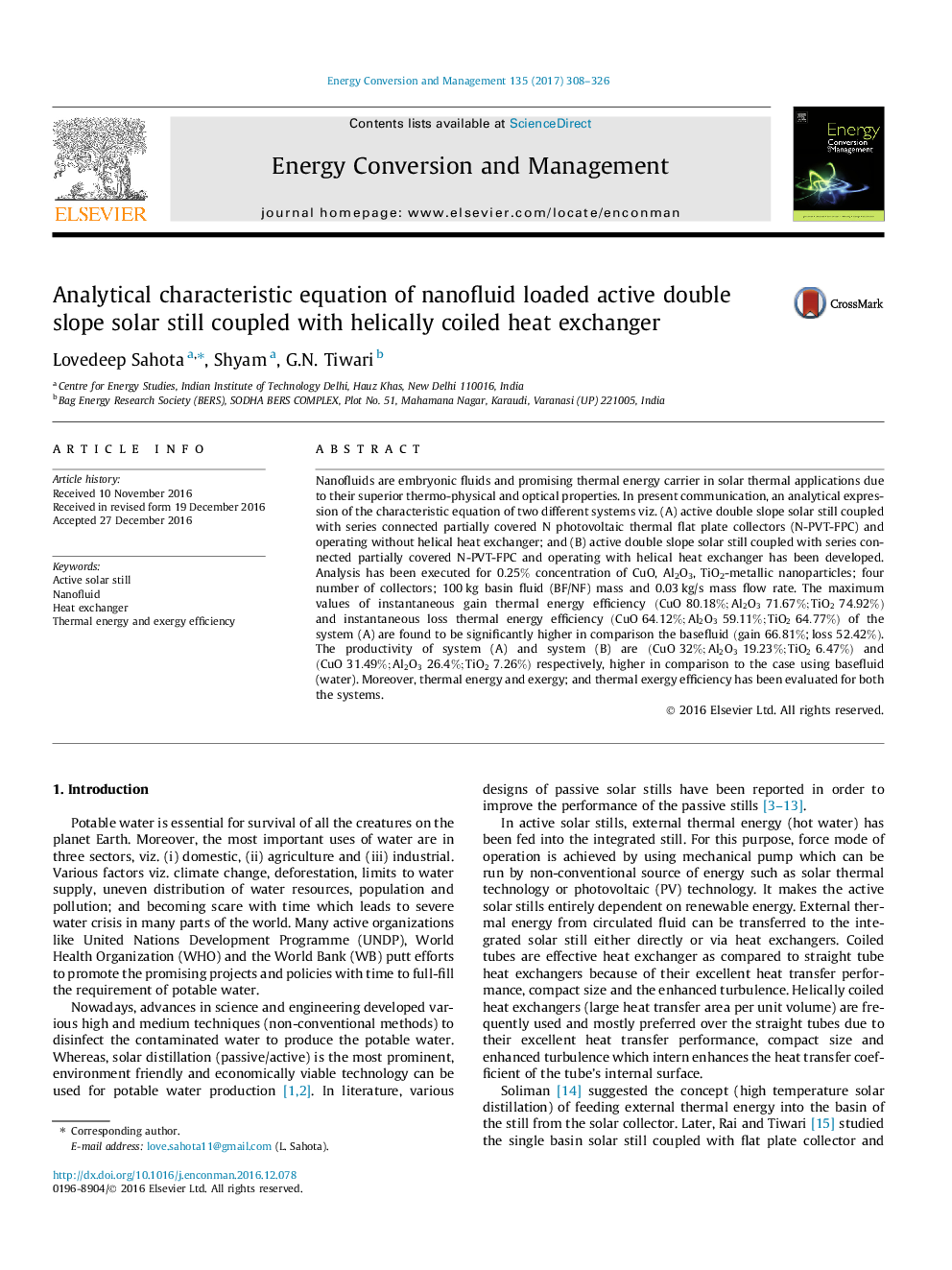| Article ID | Journal | Published Year | Pages | File Type |
|---|---|---|---|---|
| 5013214 | Energy Conversion and Management | 2017 | 19 Pages |
Abstract
Nanofluids are embryonic fluids and promising thermal energy carrier in solar thermal applications due to their superior thermo-physical and optical properties. In present communication, an analytical expression of the characteristic equation of two different systems viz. (A) active double slope solar still coupled with series connected partially covered N photovoltaic thermal flat plate collectors (N-PVT-FPC) and operating without helical heat exchanger; and (B) active double slope solar still coupled with series connected partially covered N-PVT-FPC and operating with helical heat exchanger has been developed. Analysis has been executed for 0.25% concentration of CuO, Al2O3, TiO2-metallic nanoparticles; four number of collectors; 100Â kg basin fluid (BF/NF) mass and 0.03Â kg/s mass flow rate. The maximum values of instantaneous gain thermal energy efficiency (CuO80.18%;Al2O371.67%;TiO274.92%) and instantaneous loss thermal energy efficiency (CuO64.12%;Al2O359.11%;TiO264.77%) of the system (A) are found to be significantly higher in comparison the basefluid (gain66.81%;loss52.42%). The productivity of system (A) and system (B) are (CuO32%;Al2O319.23%;TiO26.47%) and (CuO31.49%;Al2O326.4%;TiO27.26%) respectively, higher in comparison to the case using basefluid (water). Moreover, thermal energy and exergy; and thermal exergy efficiency has been evaluated for both the systems.
Related Topics
Physical Sciences and Engineering
Energy
Energy (General)
Authors
Lovedeep Sahota, Shyam Shyam, G.N. Tiwari,
